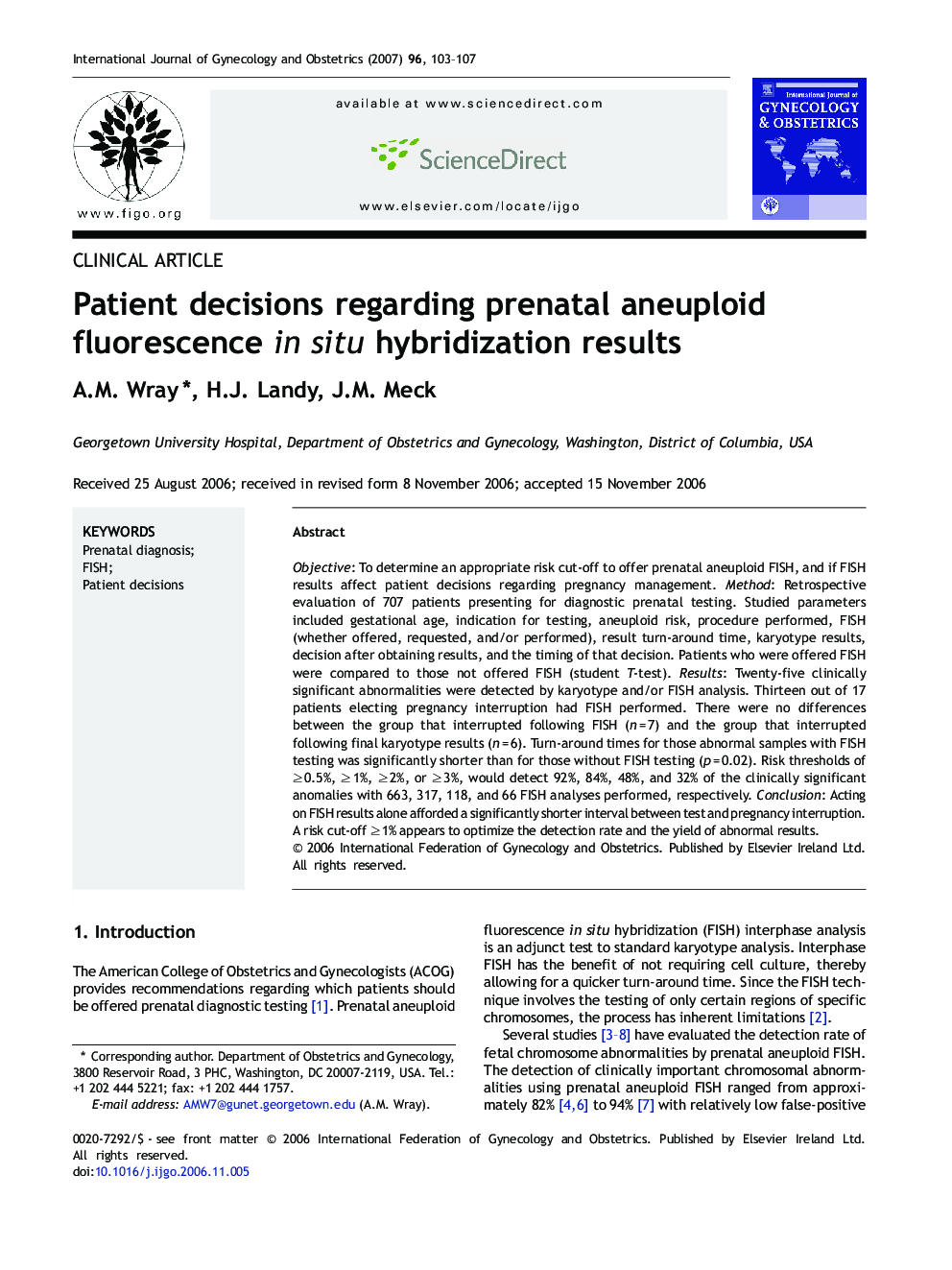| Article ID | Journal | Published Year | Pages | File Type |
|---|---|---|---|---|
| 3952350 | International Journal of Gynecology & Obstetrics | 2007 | 5 Pages |
ObjectiveTo determine an appropriate risk cut-off to offer prenatal aneuploid FISH, and if FISH results affect patient decisions regarding pregnancy management.MethodRetrospective evaluation of 707 patients presenting for diagnostic prenatal testing. Studied parameters included gestational age, indication for testing, aneuploid risk, procedure performed, FISH (whether offered, requested, and/or performed), result turn-around time, karyotype results, decision after obtaining results, and the timing of that decision. Patients who were offered FISH were compared to those not offered FISH (student T-test).ResultsTwenty-five clinically significant abnormalities were detected by karyotype and/or FISH analysis. Thirteen out of 17 patients electing pregnancy interruption had FISH performed. There were no differences between the group that interrupted following FISH (n = 7) and the group that interrupted following final karyotype results (n = 6). Turn-around times for those abnormal samples with FISH testing was significantly shorter than for those without FISH testing (p = 0.02). Risk thresholds of ≥ 0.5%, ≥ 1%, ≥ 2%, or ≥ 3%, would detect 92%, 84%, 48%, and 32% of the clinically significant anomalies with 663, 317, 118, and 66 FISH analyses performed, respectively.ConclusionActing on FISH results alone afforded a significantly shorter interval between test and pregnancy interruption. A risk cut-off ≥ 1% appears to optimize the detection rate and the yield of abnormal results.
